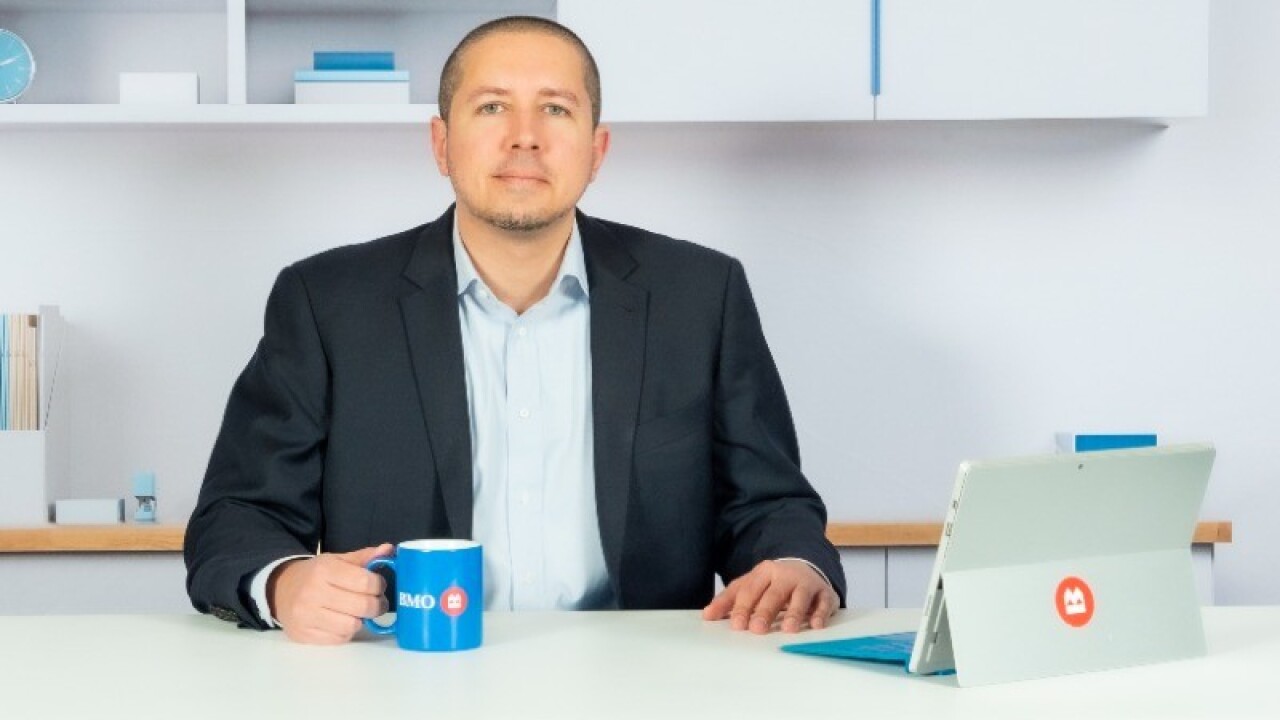Enjoy complimentary access to top ideas and insights — selected by our editors.
Want unlimited access to top ideas and insights?
Subscribe Now Five years ago, Jane Fraser was at a gas station in Idaho with her husband when she received a surprise message asking her to call her boss. It was the Friday before Labor Day, and the couple was driving from their house in Wyoming to Montana for a weekend of fly fishing.
Fraser made the call and shortly thereafter, she and her husband turned around and drove five hours back to Wyoming to talk in person to Michael Corbat, the CEO of Citi and Fraser's boss. The subject to be discussed: Corbat's pending exit and Fraser's next big assignment.
Fraser, of course, became Citi's CEO, formally succeeding Corbat in 2021, about six months after he called her back from her trip and told her that he would be retiring. The promotion made her the first woman to run Citi and the first, and still only, woman sitting atop a Wall Street bank.
"I was a whole mixture — proud, surprised," the Scottish-born banker told American Banker, recalling her reaction to being elevated into the CEO job. "So, you know, a whole mixture of delighted, but also 'Gosh, this is happening quickly, and I need to get my act together fast.'"
In the half-decade since that day, Fraser, 58, has been laser-focused on getting Citi's act together. As the CEO of what was one of the world's most complex banks, and a persistently underperforming one too, she's been orchestrating a transformation of the $2.6 trillion-asset company, shifting it from a "financial services supermarket" to a slimmer, simplified bank that generates higher revenues, has fewer expenses and, ultimately, offers higher shareholder returns.
As part of her turnaround strategy, she's lopped off far-flung consumer franchises in multiple countries, reconfigured the operating model around five core businesses, cut management layers from 13 to eight and led the bank through a massive, multiyear systems overhaul to address Citi's repeated risk management failures and related consent orders.
She's also recruited high-profile executives from other big banks to run Citi's five businesses. For example, Vis Raghavan, who was in charge of investment banking at JPMorganChase before joining Citi last year, is head of banking.
Before Fraser could implement the changes she's made, she needed to step back and reflect.
"I think one of the things that has been so helpful was utter clarity of strategy," she said. "It was that simple test of: Could you describe what you wanted Citi to be, from a strategic point of view, in two sentences to someone in an elevator? And when I got that clarity, so much fell into place. The most important piece was what we were going to be, and what therefore we weren't."
'Like building a house'
For the fifth consecutive year, Fraser is American Banker's Most Powerful Woman in Banking.
The former McKinsey partner joined Citi's corporate and investment banking division in 2004 and held a variety of jobs over the years, including company president just prior to becoming CEO.
In addition to leading New York based-Citi and its 230,000 employees, Fraser is the current chair of the Financial Services Forum, a trade organization whose members are the CEOs of the eight largest banks in the United States. She also sits on the boards of directors of the Business Roundtable, the Council on Foreign Relations and the Partnership for New York City.
She is also a member of the Group of Thirty, a body of economic and financial leaders from the public and private sectors as well as academia; the Economic Club of New York; the Monetary Authority of Singapore's International Advisory Panel, which advises on the financial sector; Harvard Business School's Board of Dean's Advisors and the Stanford Global Advisory Board.
But it is her day-to-day work at Citi where Fraser is keenly focused, and rightly so. As she nears the five-year mark as CEO, there's mounting pressure for Citi to meet its medium-term financial targets, keep its expenses in check and, most importantly, do the work necessary to get freed from the risk management consent orders that have plagued the company in recent years.
The bank is still operating under a pair of consent orders from the Federal Reserve and the Office of the Comptroller of the Currency in 2020, and last year regulators citedCiti for violating those orders, saying the bank wasn't moving fast enough to fix certain data management issues. The result: an amended consent order and another round of fines worth $136 million, on top of the $400 million in civil money penalties that were levied in 2020.
Citi is currently "at the target state" for over half of the remediation programs in areas such as risk and compliance, while the data management remediation plan is on track, Fraser said.
"In the next 12 months, almost all of the work will be done … and then it's making sure it's all coming together and working," she said. "It's like building a house. There's always a punch list for the little bit at the end to get it to the point where it passes the inspection."
In terms of performance, one key profitability metric, return on tangible common equity, is being closely watched. Citi set a goal to achieve an ROTCE in 2026 of 10%-11%, "a waypoint, not a destination," Fraser has said. The bank is trying to close the gap with peers. During the second quarter, its ROTCE was 8.7%, well below other big banks. JPMorgan, Wells Fargo and Bank of America reported ROTCEs of 21%, 15.2% and 13.4%, respectively, during the same quarter.
Analysts say Citi should be able to meet the 2026 goal.
"Then the question is, what's next?" said Ebrahim Poonawala, an analyst at Bank of America Securities.
Citi has not yet provided guidance on ROTCE beyond 2026.
"What I've said to the Street is that next year we will lay out what lies beyond," Fraser said.
Fraser has also been dealing with a personnel matter involving one of her top deputies.
Andy Sieg, Citi's head of global wealth management, was recently the subject of an investigation conducted by the law firm Paul Weiss related to his treatment of colleagues, Bloomberg reported in August. In 2023, Fraser hired Sieg away from Bank of America, where he had been president of the wealth management division.
According to Bloomberg, at least six managing directors at Citi filed human resources complaints against Sieg, and some of the accusations involved his treatment of Ida Liu, Citi's former global head of private banking who left the bank earlier this year.
Liu's departure was noteworthy partly because she was one of Citi's highest-ranking female executives, serving as the global head for four years. In 2024, she was No. 17 on American Banker's Most Powerful Women in Finance list.
Fraser, whose interview with American Banker took place about a week before the Bloomberg article was published, said Sieg was "doing a super job" overhauling the wealth business. Contacted after the Bloomberg story ran, a Citi spokesperson said Fraser's comments still stand.
'Better late than never'
Poonawala and other analysts are quick to give Fraser credit for making tough decisions during her tenure as CEO. They point to her mandates to exit underperforming markets, shrink the workforce by about 20,000 and simplify the core business structure.
Still, they, and Fraser herself, are blunt about the fact that there's a lot of work left to do.
"For so long, the question was: Is this time different? And part of that comes from the scars that investors have from betting on Citi in the past," Poonawala said in an interview. "The progress is hard to refute, but there's still skepticism around, Is this sustainable? … And if things get harder from an economic standpoint, will they be resilient? So it's still a 'show me' story."
Citi's financial performance seems to be turning a corner. Through the second quarter, each of the bank's five businesses — markets, services, wealth, banking, and U.S. personal banking, which includes 644 branches in six markets including Chicago, Los Angeles, Miami and New York — had reported positive operating leverage for at least four consecutive quarters. Positive operating leverage reflects a firm's ability to generate higher revenues while controlling costs.
Meanwhile, the stock price, which shed more than 90% of its value during the 2008-2009 financial crisis and never recovered, has been improving. Through mid-August, it was up by more than 50% year over year, trading above $90 per share.
That's all good news for Fraser, but she said "we've still got work to do" in her characteristically direct and determined manner. "I have much higher ambitions than where [the share price] is today."
Mike Mayo, an analyst at Wells Fargo Securities and one of Citi's most frequent critics over the past 20 years, predicts the bank's stock will reach $150 per share by year-end 2027.
His evolving outlook is based on Citi's anticipated expense reductions, its excess capital and its declining credit card delinquencies. It also hinges on a corporate structure that requires accountability in each of the company's five businesses, including those that tend to perform well during times of stress and uncertainty.
He isn't ready to give Fraser an A+ as CEO. Despite the time and money being spent to clean up the bank, "Citi still has worst-in-class returns, efficiency and stock market valuation," Mayo said in an interview. Still, Fraser is offering something that's been missing from Citi's story.
"I think we and investors now have a greater line of sight, not only on Citi achieving its targets in 2026, but on setting out a path for higher returns thereafter," Mayo said. "In other words, better late than never, and better late as long as it's a strengthened franchise and it's repositioned Citi to perform well not just for the next few years, but for the next decade or more."
Building on the momentum could make it easy for Fraser to stick around as CEO for a long time, said Jason Goldberg, an analyst at Barclays. He credits her for "revolutionizing" Citi and putting the company in a position where it has the ability to grow and improve profitability in a sustainable way.
"I would think she's in it for the long haul, especially if she can get through the next couple of years and get back to double-digit ROTCE next year," Goldberg said. "There's a long runway here, and it took them maybe a little bit of time to get the engine going. But now that it's going, I don't know why you'd get off."
Fraser, meanwhile, appears as determined and as optimistic about the future as ever.
"I feel like I've got a spring in my step," she said. "At a time when there's a lot of people that are more negative on America … I'm still excited about everything that I see for our country and the role that we play globally and that the American financial system plays globally."
She said it's not hard to stay motivated. Her stock price ambitions are a big factor. So too is being able to meet clients' needs and watching Citi's employees get through the hard work.
"Imagine how lucky I am to have this job," she said.






